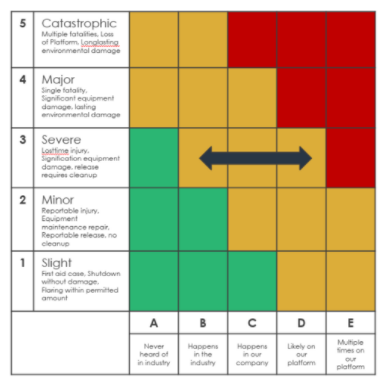Changing the Way We Do Risk Assessment in HAZIDs and HAZOPs
Making Risk Assessment Better, Less Ambiguous and Repeatable - And more Actionable
Risk assessment in HAZIDs and HAZOPs is frequently performed via a color-coded risk matrix often with three colors: red, yellow, and green. The axes of the matrix are probability of occurrence and consequence severity.
There are significant limitations to this approach including:
The judgments of both consequence severity and probability of occurrence are difficult and ambiguous because scenarios can unfold in multiple ways.
The red, yellow, green doesn’t provide enough differentiation to effectively rank scenarios. A yellow next to a green may be less problematic than a yellow next to a red.
The results are not repeatable. Different HAZOP teams may generate vastly different results.
In this course lesson video, I apply some insights from LOPA methodology to generate a more appropriate risk matrix and thus a more appropriate and repeatable approach to risk assessments in HAZOPs. It gives a more actionable risk reduction method -it’s much specific and useful by giving specific directions toward creating a safer design.
You can see my full course, Stream-Based HAZOP Method, here on the GATE Energy Brainery for free.
Typical Color-Coded Matrix


